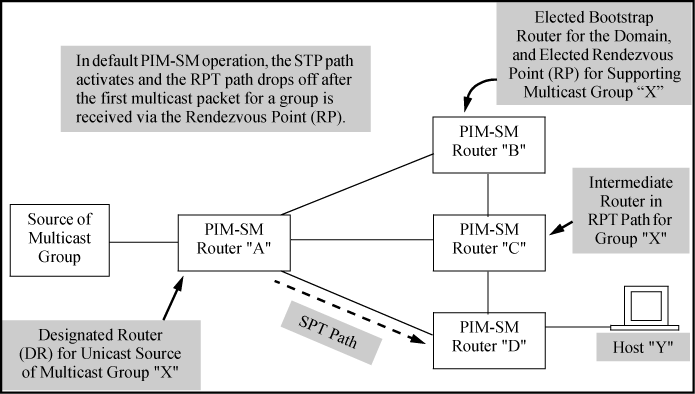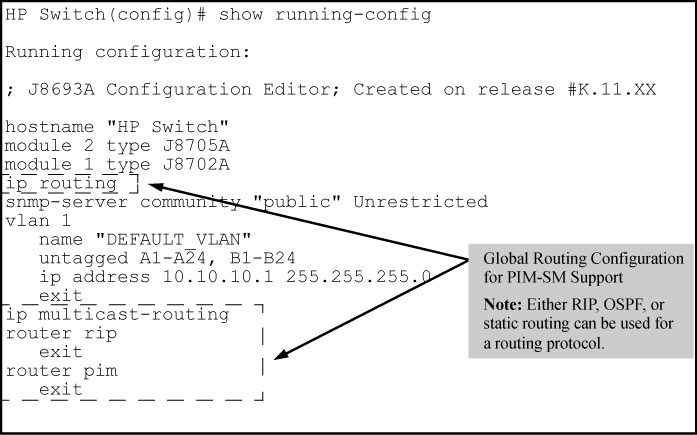Before configuring specific PIM-SM settings, it is necessary to enable IP routing, IP multicast routing, an IP routing protocol, and PIM in the global configuration context. Also, if the router operates as an edge router for any end points (receivers) expected to join multicast groups, it is also necessary to enable IGMP on the VLANs supporting such receivers.
|
|
|
![[NOTE: ]](images/note.gif) |
NOTE: PIM-SM operation requires an IP routing protocol enabled on the router. You can use RIP, OSPF, and/or static routing. The examples in this section use RIP. See Routing Basics. |
|
|
Syntax:
Enables IP routing on the router.
The
noform of the command disables IP routing. Note that before disabling IP routing, it is necessary to disable all other IP routing protocols on the router.
Syntax:
Enables or disables IP multicast routing on the router. IP routing must first be enabled. Note that router PIM must be disabled before disabling IP multicast routing.
Syntax:
These commands are the options for the IP routing protocol required to support PIM operation. For more on these options, see Routing Basics
Syntax:
Puts the CLI into the PIM context level. IP routing must be enabled before enabling PIM.
The
no router pimcommand deletes the PIM configuration. (Default: Disabled)Configuring for PIM support at the global level
Using the topology (Example PIM-SM domain with SPT active to support a host that has joined a multicast group), router "B" is directly connected to the DR for multicast group "X." In this case, suppose that you want to globally configure router "B" for PIM operation. On the global level, you would enable the following:
IP routing
IP multicast routing
An IP routing protocol (RIP, OSPF, or static routing; use RIP for this example)

